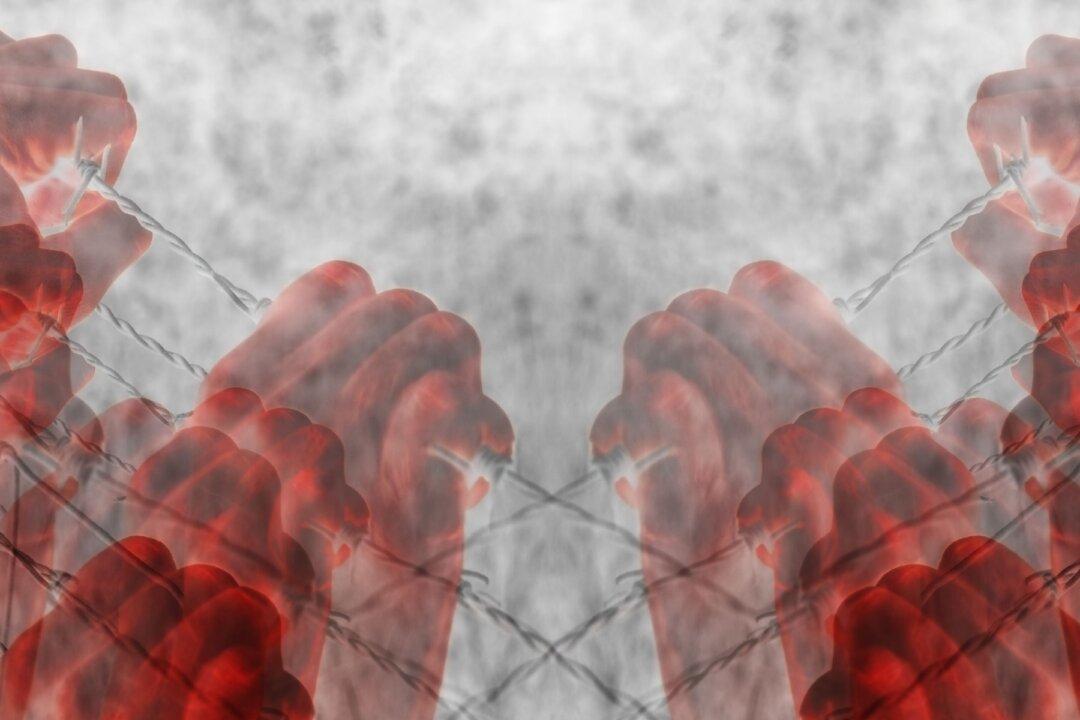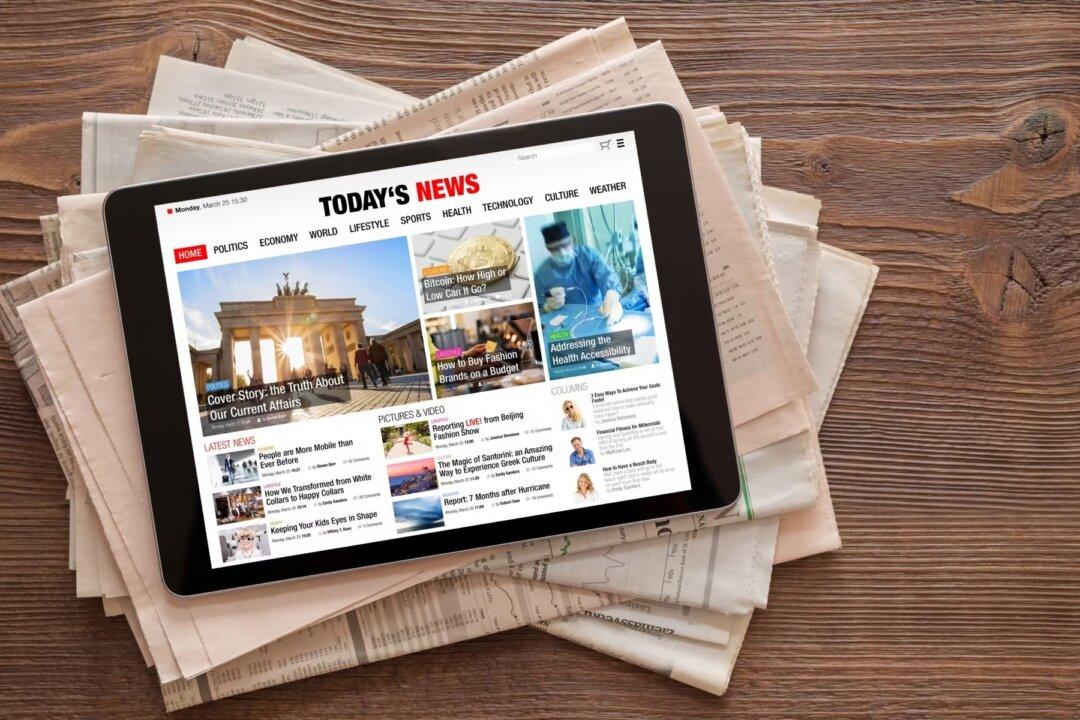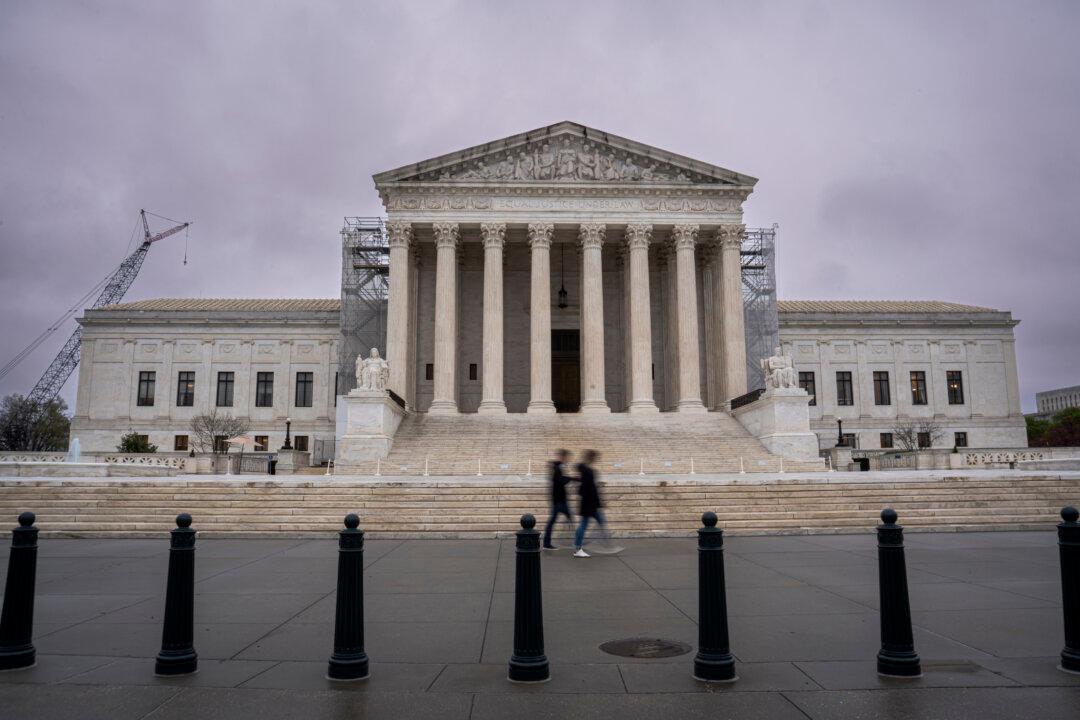Commentary
While private companies might arguably choose to censor content on their platforms, the government cannot pressure or coerce private companies to censor disfavored content. Any such action is clearly a violation of the free speech guaranteed by the First Amendment of the U.S. Constitution. As we articulate in our latest legal brief: “Under the First Amendment, the federal Government should have no role in policing private speech or picking winners and losers in the marketplace of ideas. But that is what federal officials are doing, on a massive scale.”
“Plaintiffs served interrogatories and document requests upon the Government Defendants seeking the identity of federal officials who have been and are communicating with social-media platforms about disinformation, misinformation, malinformation, and/or any censorship or suppression of speech on social media, including the nature and content of those communications. Plaintiffs also served third-party subpoenas on five major social-media platforms—Twitter, Facebook and Instagram (both owned by Meta), YouTube, and LinkedIn. On August 17, 2022, the Government Defendants provided objections and responses to the Plaintiff States’ discovery requests, and began a rolling production of documents that was completed on August 26, 2022.”
Here’s some of what we found so far in the documents that have been turned over, as described in our latest legal filing to the court:
“Secretary Mayorkas of DHS [Department of Homeland Security] commented that the federal Government’s efforts to police private speech on social media are occurring ‘across the federal enterprise.’ Doc. 45, ¶ 233. It turns out that this statement is true, on a scale beyond what Plaintiffs could ever have anticipated. The limited discovery produced so far provides a tantalizing snapshot into a massive, sprawling federal ‘Censorship Enterprise,’ which includes dozens of federal officials across at least eleven federal agencies and components identified so far, who communicate with social-media platforms about misinformation, disinformation, and the suppression of private speech on social media—all with the intent and effect of pressuring social-media platforms to censor and suppress private speech that federal officials disfavor.
“The discovery provided so far demonstrates that this Censorship Enterprise is extremely broad, including officials in the White House, HHS, DHS, CISA [Cybersecurity and Infrastructure Security Agency], the CDC, NIAID, and the Office of the Surgeon General; and evidently other agencies as well, such as the Census Bureau, the FDA, the FBI, the State Department, the Treasury Department, and the US Election Assistance Commission. And it rises to the highest levels of the US Government, including numerous White House officials. More discovery is needed to uncover the full scope of this ‘Censorship Enterprise,’ and thus allow Plaintiffs the opportunity to achieve fully effective injunctive relief. Defendants have objected to producing some of the most relevant and probative information in their possession—i.e., the identities, and nature and content of communications, of White House officials and officials at other federal agencies who are not yet Defendants in this case because they were unknown when Plaintiffs served their discovery six weeks ago. Defendants have objected to producing discovery that would reveal both the height and the breadth of the federal ‘Censorship Enterprise.’ The Court should overrule these objections and order Defendants to provide this highly relevant, responsive, and probative information.”
Our brief continues:
“The third-party social-media platforms, moreover, have revealed that more federal agencies are involved. Meta, for example, has disclosed that at least 32 federal officials—including senior officials at the FDA, the US Election Assistance Commission, and the White House—have communicated with Meta about content moderation on its platforms, many of whom were not disclosed in response to Plaintiffs’ interrogatories to Defendants. YouTube disclosed eleven federal officials engaged in such communications, including officials at the Census Bureau and the White House, many of whom were also not disclosed by Defendants. Twitter disclosed nine federal officials, including senior officials at the State Department who were not previously disclosed by Defendants.”
As I will write about more in a future post, the government is protecting Anthony Fauci and other high level officials by refusing to reveal documents related to their involvement. Stay tuned for more on that issue. For now, as our brief explains here, those implicated include many officials at the highest level of the current administration:
“Second, these federal censorship activities include very senior officials within the US Government, i.e., ‘members of our senior staff,’ in former White House Press Secretary Jen Psaki’s words. Doc. 42, ¶ 174. Defendants have steadfastly refused to respond to any interrogatories or document requests directed to the White House officials, such as White House Press Secretary Karine Jean-Pierre and Dr. Fauci in his capacity as Chief Medical Advisor to the President. But their own document production provides a glimpse into the involvement of several senior White House officials in communications with social-media platforms about censorship—including White House Senior COVID-19 Advisor Andrew Slavitt, Deputy Assistant to the President Rob Flaherty, White House COVID-19 Director of Strategic Communications and Engagement Courtney Rowe, White House Digital Director for the COVID-19 Response Team Clarke Humphrey, among others. See Ex. 3.
“Further, the social-media platforms have independently disclosed the identities of senior White House officials involved in such communications. For example, Meta has disclosed the involvement of additional White House officials as White House Counsel Dana Remus and White House Partnerships Manager Aisha Shah, as well as Deputy Assistant to the President Rob Flaherty. YouTube has disclosed the involvement of White House officials such as Rob Flaherty and Benjamin Wakana, the Director of Strategic Communications and Engagement at the White House COVID-19 Response Team. Twitter has disclosed the involvement of Andrew Slavitt.”
Our lawyers then cite a few examples of how this government censorship regime has been functioning, as revealed by internal communications:
“The limited communications produced so far from these high-level officials are particularly relevant and probative, because they provide revealing glimpses into the intensive oversight and pressure to censor that senior federal officials placed on social-media platforms. For example, after President Biden publicly stated (about Facebook) on July 16, 2021, that ‘They’re killing people,’ a very senior executive at Meta (Facebook and Instagram) reached out to Surgeon General Vivek Murthy to engage in damage control and appease the President’s wrath. Ex. 4, at 1. Soon thereafter, the same Meta executive sent a text message to Surgeon General Murthy, noting that ‘it’s not great to be accused of killing people,’ and expressing that he was ‘keen to find a way to deescalate and work together collaboratively.’ Ex. 5, at 1.
“Such ‘deescalation’ and ‘working together collaboratively,’ naturally, involved increasing censorship on Meta’s platforms. One week after President Biden’s public accusation, on July 23, 2021, that a senior Meta executive sent an email to Surgeon General Murthy stating, ‘I wanted to make sure you saw the steps we took just this past week to adjust policies on what we are removing with respect to misinformation, as well as steps taken to further address the ‘disinfo dozen’: we removed 17 additional Pages, Groups, and Instagram accounts tied to the disinfo dozen ....’ Ex. 3, at 2. Again, on August 20, 2021, the same Meta executive emailed Murthy to assure him that Facebook ‘will shortly be expanding our COVID policies to further reduce the spread of potentially harmful content on our platform. These changes will apply across Facebook and Instagram,’ and they included ‘increasing the strength of our demotions for COVID and vaccine-related content,’ and ‘making it easier to have Pages/Groups/Accounts demoted for sharing COVID and vaccine-related misinformation.’ Ex. 4, at 3. In addition, that senior Meta executive sent a ‘Facebook bi-weekly COVID content report’ to Surgeon General Murthy to White House official Andrew Slavitt, evidently to reassure these federal officials that Facebook’s suppression of COVID-19 ‘misinformation’ was aggressive enough for their preferences. Ex. 4, at 6-19.”
The brief then goes on to explain how this amounts to more than just collaboration or cooperation between government and Big Tech, but coercive use of power dynamics to pressure Big Tech to do the government’s bidding:
“Such communications from the White House impose maximal pressure on social-media companies, and they clearly get results when it comes to censorship. And federal officials are fully aware that such pressure is necessary to induce social-media platforms to increase censorship. CISA [Cybersecurity and Infrastructure Security Agency] Director Jen Easterly, for example, texted with another CISA official about ‘trying to get us in a place where Fed can work with platforms to better understand the mis/dis trends so relevant agencies can try to prebunk/debunk as useful,’ and complained about the Government’s need to overcome the social-media platforms’ ‘hesitation’ to working with the government: ‘Platforms have got to get more comfortable with gov’t. It’s really interesting how hesitant they remain.’ Ex. 5, at 4 (emphasis added).”
Perhaps these companies were hesitant because they knew that the government pressure and coercion was clearly unlawful, not to mention the fact that private companies and publishers don’t want to be told what to publish and don’t want their policies dictated by government officials. Our legal brief goes on:
“In fact, such pressures from government officials on social-media companies, along with the many public statements alleged in the Complaint, have succeeded on a grand scale. Discovery received so far indicates that a veritable army of federal bureaucrats are involved in censorship activities ‘across the federal enterprise.’ They include the 45 key custodians identified in Plaintiffs’ interrogatory responses so far, 32 federal officials identified by Facebook so far, eleven officials identified by YouTube, and nine identified by Twitter (many of which do not overlap, either with each other or Defendants’ disclosures). And Defendants have not yet received interrogatory responses reflecting Defendants’ knowledge of federal officials at other agencies who communicate with social-media platforms about censorship — but apparently there are many. So many, in fact, that CISA Director Jen Easterly and another CISA official apparently complained, in an internal text messages, that ‘chaos’ would result if all federal officials were ‘independently’ contacting social-media platforms about so-called misinformation: ‘Not our mission but was looking to play a coord role so not every D/A is independently reaching out to platforms which could cause a lot of chaos.’ Ex. 5, at 4.
“These federal bureaucrats are deeply embedded in a joint enterprise with social-media companies to procure the censorship of social-media speech. Officials at HHS routinely flag content for censorship, for example, by organizing weekly ‘Be On The Lookout’ meetings to flag disfavored content, Ex. 6; sending lengthy lists of examples of disfavored posts to be censored, Ex. 6, at 21-22; serving as privileged ‘fact checkers’ whom social-media platforms consult about censoring private speech, Ex. 7; and receiving detailed reports from social-media companies about so-called ‘misinformation’ and ‘disinformation’ activities online, Ex. 4; among others. CISA, likewise, has aggressively embraced its ‘evolved mission’ of screening complaints of social-media disinformation and then ‘routing disinformation concerns’ to social-media platforms, Doc. 45, ¶¶ 250-251. CISA routinely receives reports of perceived ‘disinformation’ and forwards them to social-media companies, placing the considerable weight of its authority as a federal national-security agency behind other parties’ demands for suppression of private speech. Ex. 8.
“Moreover, many of these substantive communications from federal officials flagging specific posts and content for censorship seem to occur through alternative channels of communication that Plaintiffs have not yet obtained (as the third-party social-media platforms contend they are shielded from discovery by the Stored Communications Act). For example, Facebook trained CDC and Census Bureau officials on how to use a ‘Facebook misinfo reporting channel.’ Ex. 9. Twitter offered federal officials a privileged channel for flagging misinformation through a ‘Partner Support Portal.’ Ex. 9, at 69. YouTube has disclosed that it granted “trusted flagger” status to Census Bureau officials, which allows privileged and expedited consideration of their claims that content should be censored.
“In the face of these and many other disclosures, Defendants are refusing to provide some of the most relevant and most probative evidence of the most egregious First Amendment violations.”
Hyperbole and exaggeration have been common features on both sides of COVID policy disputes. But I can say with all soberness and circumspection (and you, kind readers, will correct me if I am wrong here): this evidence suggests we are uncovering the most serious, coordinated, and large-scale violation of First Amendment free speech rights by the federal government’s executive branch in U.S. history. Period, full stop. Even wartime propaganda efforts never reached this level of censorship, nor did the government in days past have the power of today’s social media at its disposal.
Stay tuned for more updates as this case unfolds.





